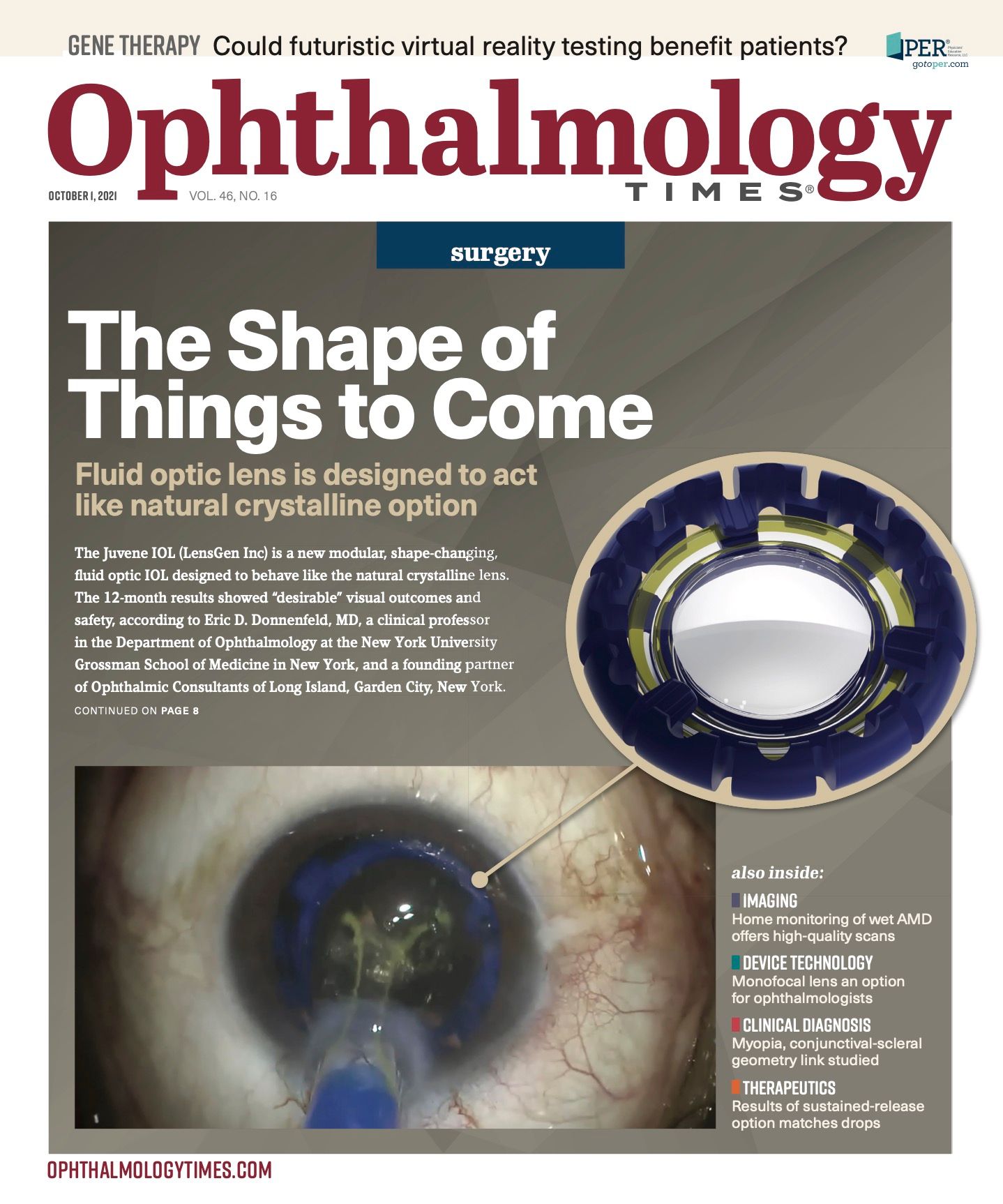Publication
Article
Digital Edition
Study reveals temporal, anatomic complexity in genetic evolution of uveal melanoma
Author(s):
Investigators have found that the early and late stages of uveal melanoma differ markedly.

The early and late stages of uveal melanoma differ markedly, according to findings detailed by scientists from Bascom Palmer Eye Institute, University of Miami Miller School of Medicine in Florida.
An analysis of the tumors from 2 patients with metastatic uveal melanoma identified temporal and anatomic complexities in the genetic evolution of the disease that had not been recognized previously,1 according to first author Daniel Rodriguez, BS, who is pursuing a doctorate of medicine and of philosophy at the J. William Harbour laboratory at Bascom Palmer Eye Institute.
Related: Liquid biopsies: Not yet ready for prime time in uveal melanoma
A great deal is known about the early stages of uveal melanoma but not the later metastatic stage.
A number of genes involved in the disease have been identified, including initiating mutations in genes in the Gaq/11 signaling pathway.
These include GNAQ, GNA11, PLCB4, or CYSLTR2, and a progression mutation in BAP1, SF3B1, or EIF1AX (or “BSE” progression) associated with high, intermediate, and low metastatic risk, Mr Rodriguez explained.
The genetic evolution of uveal melanoma has remained largely a mystery until now.
Patients
In the study, investigators conducted multiregional genomic sequencing of 22 tumors from 2 patients with widely metastatic uveal melanoma.
Patient 1 was a 51-year-old Caucasian man who received a diagnosis of uveal melanoma involving the choroid of the left eye. He was treated first with plaque brachytherapy.
Related: Pearls for managing care of high-risk uveal melanoma patients
Metastasis to the liver 3 years later was treated with ipilimumab and cyclophosphamide.
Four months later, therapy was switched to vorinostat due to disease progression.
With new lesions discovered in the man’s liver and lung and around the spleen, therapy was changed to pembrolizumab.
The disease progressed relentlessly in his liver, peritoneum, and left 12th rib.
Treatment was changed over time with a series of drugs that included everolimus, pasireotide, binimetinib, sotrastaurin, sunitinib, sirolimus, and temozolomide.
Ultimately subcutaneous metastasis occurred, and the patient died 21 months after the initial metastasis was discovered.
Patient 2 was a 69-year-old woman with a stage T3b uveal melanoma involving the ciliary body and choroid in her right eye.
Related: Conjunctival melanoma: Unlocking mysteries of disease
The eye was enucleated and 21 months later, small nodules were seen in the lungs.
Initially, she was observed. Liver metastasis was confirmed 1 year later and she was treated with ipilimumab.
The disease progressed to the liver and she underwent therapy with temozolomide and Yttrium-90 hepatic radioembolization.
Rapid extrahepatic progression occurred and she died 1 year after the initial metastasis had begun.
Based on 22 tumors from the 2 patients, the investigators performed multiregional genomic sequencing.
Related: Investigators identify an eye cancer culprit
They reported observing “multiple seeding events from the primary tumors, metastasis-to-metastasis seeding, polyclonal seeding, and late driver variants in ATM, KRAS, and other genes previously unreported” in association with uveal melanoma.
Identification of the late drivers of the disease is the key distinction in uveal melanoma.
The authors defined them as “rare or even one-off events that may provide a selective advantage in specific cases but are not generally necessary for UM [uveal melanoma] development or progression.”
In patient 2, the emergence of the late driver was the KRAS G12V variant concurrent with rapid disease progression.
Related: Options give 1-2 punch to metastatic uveal melanoma
“These findings revealed previously unrecognized temporal and anatomic complexity in the genetic evolution of metastatic uveal melanoma, and they highlighted the distinction between early and late phases of uveal melanoma genetic evolution with implications for novel therapeutic approaches,” the investigators concluded.
--
Reference
1. Rodriguez DA, Yang J, Durante MA, et al. Multiregional genetic evolution of metastatic uveal melanoma. NPJ Genom Med.2021;6(1):70. doi:10.1038/s41525-021-00233-5

Newsletter
Don’t miss out—get Ophthalmology Times updates on the latest clinical advancements and expert interviews, straight to your inbox.





